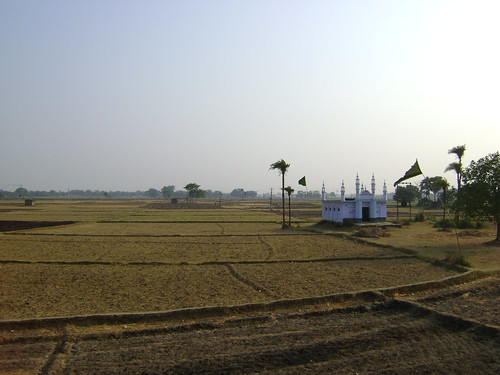By Charu Bahri, TwoCircles.net
It has been more than a month since UPA government came back to power but still they are hashing out the 100-day agenda of the government. Before any government makes any policy decision or sets the nation on to a course for the future, it should take into account hopes and aspirations of the people.

Ideally speaking, the government should take cognizance of the opinion of experts prior to formulating its future course of action. To facilitate this process, TwoCircles.net decided to turn to well placed professionals from the Indian Muslim community, and ask these experts to identify the main challenges facing almost every facet of the Indian economy – agriculture, health, education, finance, industry, real estate, information technology, telecom, pharmaceuticals, biotechnology, textiles & fashion and sports. The experts we spoke to did not only list challenges, but also shared their opinion on remedial measures to speed up growth and development.
TwoCircles.net presents “Agenda for India” covering 13 sectors that are important for India. Series editor is Charu Bahri.
Agriculture
“The Indian agriculture sector employs about 60% of the total population of the country, and yet it accounts for only about 17% of the total GDP,” shares Dr Iqbal Ahmad, Reader, Department of Agricultural Microbiology, Aligarh Muslim University.
“Agricultural incomes are lower than incomes in other sectors and are falling, not rising. The agricultural sector is vast. It integrates various components and as such, is multidisciplinary. It isn’t surprising then that the sector faces several challenges in developing countries. In India, these challenges range from the post green revolution stagnation in the productivity of primary agricultural crops to the varying scale of malnutrition.”
“The foremost challenges of the Indian agriculture sector relate to crop production, storage and the financial conditions of farmers. These issues are stagnation in crop productivity, the post harvest storage and processing of food crops, and the need for an agribusiness strategy to improve farmer’s financial condition.”

“As regards resolving these issues, the challenge of sustainable crop productivity should be addressed by diverting more funds to agricultural research and education. That is, the disciplines of agricultural science, the application of modern technology to increase agricultural productivity, and measures to enhance the profitability of agriculture to keep pace with demand. Consideration should be given to the interaction of technology, society and the environment.”
“Sustainable crop productivity is an outcome of the adoption of integrated plant nutrient management (IPNM) and integrated plant disease and pest management (IPDPM); the integrated management of land and water use; the use of indigenous and modern biotechnologies and information technologies; the maximum utilization of microbial strategies for sustainable crop productivity; and the maintenance of soil health.”
“When it comes to the adoption of technology and productivity, Indian agriculture lags behind many other countries. This is primarily due to poor basic infrastructure, a poor irrigation system in many parts of the country, poor power supply, poor transport facilities to rural areas, limited access to education, and the lack of awareness among farmers of new technologies. These issues must be addressed by the government through appropriate schemes.”
“At the same time, the government should develop ways and means to control/minimize corruption in the implementation of its various schemes.”

“The government should use rural schools as agricultural knowledge dissemination centers for farmers, and offer suitable incentives to participants to take part in training courses. The creation of self help groups may also help further the adoption of advanced agricultural practices.”
“Trained poor folk would be a great asset to rural agriculture. Youth could be effectively engaged in the implementation of government schemes.”
“The adoption of integrated farming techniques related to post harvest storage and food processing should be encouraged, so that the value of primary food crops may be enhanced. These measures will help farmers earn more profit from their produce and diversify into profitable small scale agribusinesses.”
“The challenges of food security in a developing country like India may be countered by adopting newer technology, demonstrating and protecting agricultural diversity.”
[Photos: TCN]
Series Home: http://www.twocircles.net/special_reports/agenda_india.html

